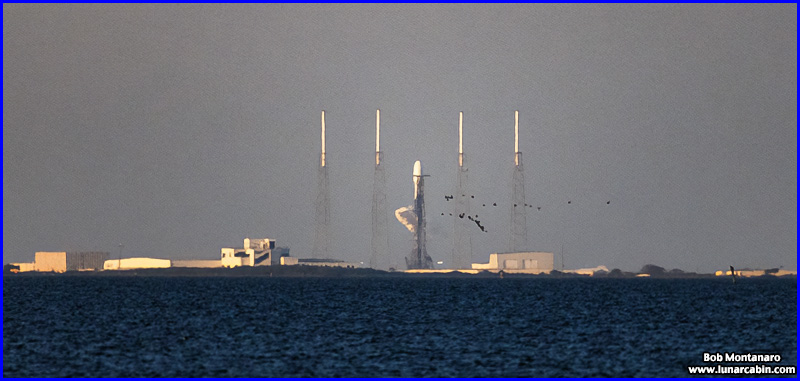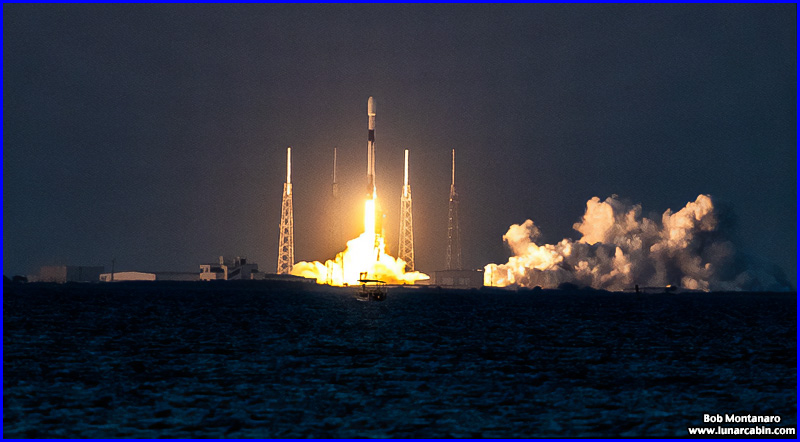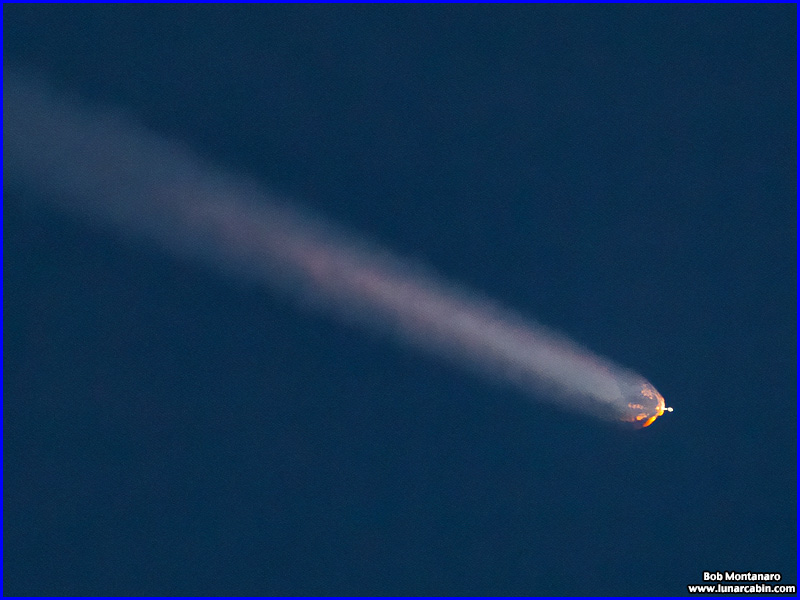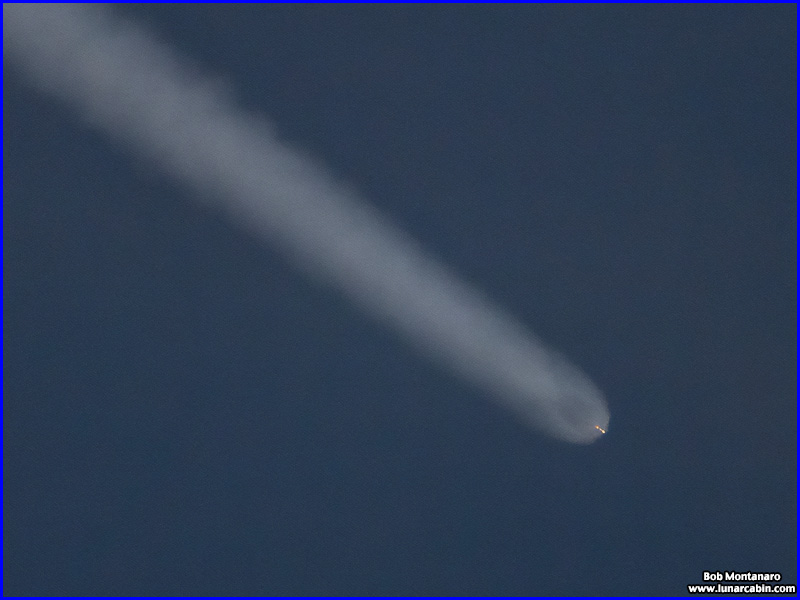 |
|
Starlink 6-1 (Falcon 9) 27 February 2023 |
Space Launch Complex 40 Cape Canaveral Space Force Station |
| A SpaceX Falcon 9 rocket launched 21 second-generation Starlink satellites to low-Earth orbit from Space Launch Complex 40 (SLC-40) at Cape Canaveral Space Force Station at 6:13 p.m. on 27 February 2023. The first stage booster supporting this mission previously launched CRS-26 and OneWeb Launch 16. Following stage separation, Falcon 9’s first stage landed on the A Shortfall of Gravitas droneship stationed in the Atlantic Ocean. | |
 |
|
 |
|
 |
|
 |
|
 |
|
 |
|
 |
|
 |
|
 |
|
 |
|
 |
|
First stage booster separation. |
|
 |
|
| The two fairing halves covering the Starlink satellites separate from the second stage as it powers on to orbit while the first stage booster trails behind in its maneuvers to land on the droneship. | |
 |
|
EXCERPTS FROM A SPACE X STARLINK 6-1 MEDIA RELEASE |
|
There are two versions of Starlink's second generation of satellites, V2 designed to fly on Starship, and V2 Mini, designed to fly on Falcon 9. The V2 Minis are smaller than the V2 satellites (hence the name) but don't let the name fool you. The V2 Minis include more advanced phased array antennas and the use of E-band for backhaul, which will enable Starlink to provide ~4x more capacity per satellite than earlier iterations. The V2 Minis are also equipped with new argon Hall thrusters for on orbit maneuvering. Developed by SpaceX engineers, they have 2.4x the thrust and 1.5x the specific impulse of our first generation thrusters. This will also be the first time ever that argon Hall thrusters are operated in space. |
|
All contents copyright Lunar Cabin |
|